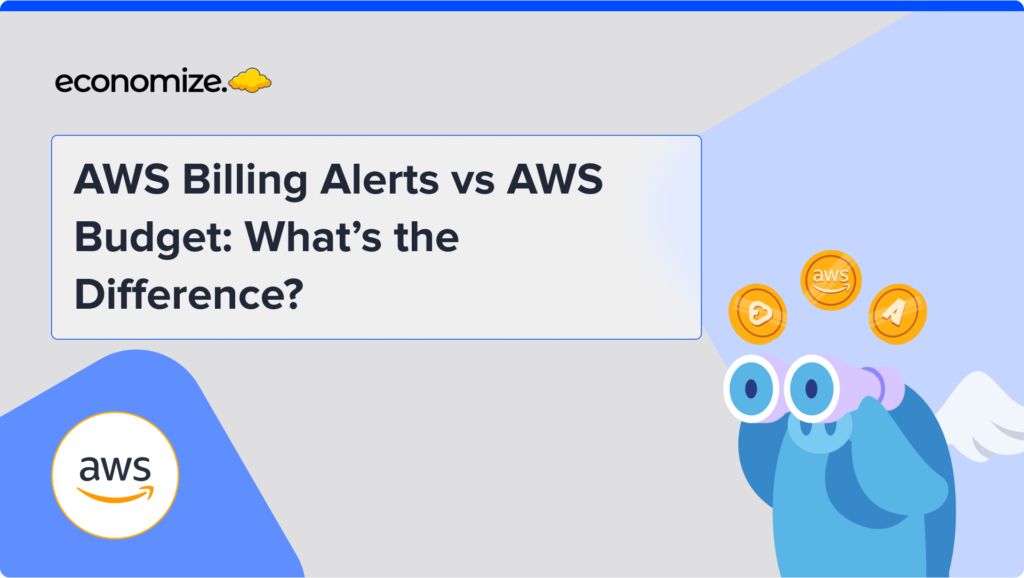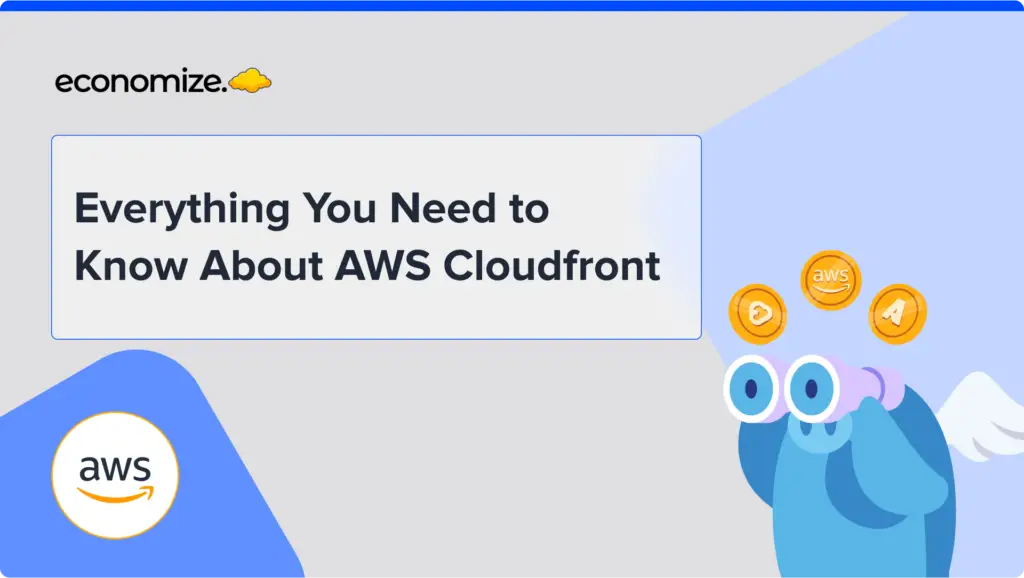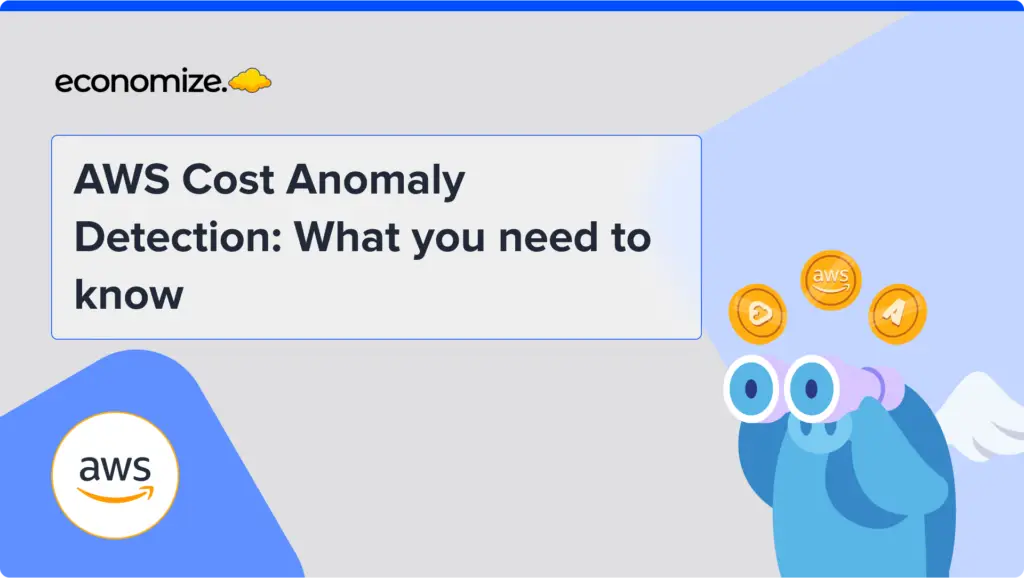AWS offers a variety of tools to help organizations track, manage, and optimize their cloud expenses. Among these tools, AWS Budgets and AWS Cost Explorer stand out as essential resources for controlling and forecasting costs.
While both are designed to help you manage your AWS spending, they serve different purposes and cater to different needs. Understanding the differences and the best use cases for each can significantly impact your financial strategy and cloud efficiency.
What Is AWS Budgets?
To put it in simple words, AWS Budgets is a cost management tool that allows you to set custom cost and usage budgets. It helps you stay informed about your cloud spending by providing alerts when your usage or costs exceed your specified thresholds.

You can manage your cloud expenses more effectively by setting up various types of budgets within AWS Budgets. Here are some approaches you might consider:
- Monthly Cost Budget with a Fixed Target:
You can establish a monthly cost budget with a predetermined target amount to monitor all costs linked to your account. This setup allows you to receive alerts for both actual costs (after they have been incurred) and forecasted costs (before they accrue), enabling you to keep a close eye on your spending. - Monthly Cost Budget with a Variable Target:
Alternatively, you can create a monthly budget with a target that increases by 5 percent each month. You can then set up notifications to alert you when you reach 80 percent of your budget. Moreover, you can automate specific actions—like applying a custom IAM policy that restricts the provisioning of additional resources within an account—once your budget threshold is approached. - Monthly Usage Budget with a Fixed Usage Target:
For those who prefer to monitor usage instead of cost, setting a monthly usage budget with a fixed limit is an effective strategy. This setup is particularly useful for ensuring you stay within the service limits for specific AWS services or within the boundaries of the AWS Free Tier offerings. Forecasted notifications can also be configured to help you manage this effectively. - Daily Utilization or Coverage Budget for RIs or Savings Plans:
If you’re utilizing Reserved Instances (RIs) or Savings Plans, setting a daily utilization or coverage budget can be crucial. You can configure notifications—via email or Amazon SNS topics—to alert you when your utilization drops below 80 percent on any given day, ensuring optimal use of your reservations.
AWS Budgets updates information up to three times daily, typically within 8–12 hours after the last update. These budgets can track various cost metrics, including unblended, amortized, and blended costs. You also have the flexibility to include or exclude specific charges, such as discounts, refunds, support fees, and taxes, depending on your monitoring needs.
This structured approach to budget management allows you to maintain control over your cloud spending, ensuring that your financial strategy aligns with your operational goals.
What Is AWS Cost Explorer?
AWS Cost Explorer is a user-friendly tool designed to help you visualize, understand, and manage your AWS costs and usage over time. With its broad range of filtering and grouping options, AWS Cost Explorer allows you to break down your cloud expenses by service, linked account, region, instance type, and more, offering a comprehensive view of your spending.

This tool provides various ways to analyze your costs and usage.
- You can delve into your data using the main graph, review detailed cost and usage reports, or examine Reserved Instance (RI) reports.
- AWS Cost Explorer also allows you to access historical data for up to the past 13 months, making it easier to track spending patterns. Additionally, it can forecast your likely expenses for the next 12 months and even offer recommendations on which Reserved Instances to purchase, helping you optimize your cost management strategy.
- Cost Explorer offers preconfigured views that provide quick insights into your cost trends, giving you an immediate overview of your spending patterns. These ready-made views serve as a solid foundation, allowing you to quickly begin customizing them to better align with your specific needs.
Using the Cost Explorer interface, you can view your costs and usage data free of charge. For those who prefer a more automated approach, you can access this data programmatically through the Cost Explorer API, which incurs a minimal charge of $0.01 per paginated API request. It’s important to note that once you enable Cost Explorer, it cannot be disabled.
AWS Budgets Vs AWS Cost Explorer
AWS Budgets and AWS Cost Explorer are essential tools for managing and optimizing cloud expenses, but they serve different purposes and cater to varying needs. AWS Budgets is designed to help you set and monitor custom cost and usage budgets. AWS Cost Explorer, on the other hand, focuses on providing detailed insights into your spending patterns over time.
Here’s a table highlighting the key differences between AWS Budgets and AWS Cost Explorer:
| Feature | AWS Budgets | AWS Cost Explorer |
|---|---|---|
| Primary Use Case | Proactive cost management with alerts and automated actions. | In-depth analysis of spending patterns and trends. |
| Budgeting | Allows setting specific financial goals and thresholds. | Does not support setting budgets but provides detailed cost data. |
| Alerts | Sends alerts when budget thresholds are approached or exceeded. | No alerting feature; focuses on reporting and visualization. |
| Forecasting | Limited to forecasting budget adherence based on current trends. | Offers detailed cost forecasts for the next 12 months. |
| Customization | Budgets can be customized based on cost, usage, service, etc. | Provides extensive filtering and grouping options for data analysis. |
| Historical Data | Not focused on historical data analysis. | Accesses up to 13 months of historical data. |
| Cost Optimization | Helps control costs by enforcing budget limits. | Helps identify areas for cost optimization and resource efficiency. |
| User Interface | Simple UI for setting and managing budgets. | Comprehensive UI for detailed cost analysis and reports. |
| Programmatic Access | No API for direct programmatic budget management. | API available for programmatic access to cost and usage data. |
| Ideal Users | Organizations with strict budget controls and need for cost alerts. | Businesses seeking detailed insights into cloud spending. |
Both AWS Budgets and AWS Cost Explorer are powerful tools that serve distinct yet complementary purposes in cloud cost management. AWS Budgets is your go-to solution for setting and enforcing budgets, receiving alerts, and taking immediate actions to control spending. On the other hand, AWS Cost Explorer excels in providing detailed insights, helping you analyze historical data, forecast future costs, and optimize your cloud investments.
Choosing between AWS Budgets and AWS Cost Explorer depends on your organization’s specific needs. If proactive cost control with real-time alerts is your priority, AWS Budgets is the right tool. However, if you need to gain a comprehensive understanding of your cloud spending and identify areas for optimization, AWS Cost Explorer will serve you best. For many organizations, using both tools in tandem can provide a well-rounded approach to managing AWS costs effectively.
Economize – Your go-to Tool for Cloud Cost Optimization
Although AWS Budget and AWS Cost Explorer are great tools for cloud management, as organizations scale up, the challenge of keeping cloud expenditures under control becomes increasingly daunting. To manage a growing cloud infrastructure you need a comprehensive tool that can provide detailed cost visibility, and optimize resource allocation.
Economize is your ultimate cloud cost optimization tool that can simplify and streamline your cost management process. Unlike other tools that require complex configurations and lengthy onboarding processes, Economize makes it easy to get started. Economize stands out for its quick and effortless integration with other financial and analytic tools in under five minutes. The other features include:
Tailored Cost-Saving Recommendations
One of the standout features of Economize is its “Recommendations” section. Acting as a personal cost-saving advisor, it analyzes your GCP usage and delivers customized suggestions to optimize your costs. These recommendations are based on real-time data and provide actionable insights that can lead to significant savings.

Comprehensive Organization View
Economize provides an “Organization View” that offers a detailed analysis of where your cloud spending is concentrated. This feature allows you to make informed decisions about resource allocation and cost management, ensuring that every dollar spent is accounted for and justified.
Root Cause Analysis for Cost Spikes
Unexpected cost spikes can be a major concern for cloud users. Economize’s “Root Cause Analysis” tool delves into these anomalies, helping you identify and address the underlying issues. This feature is essential for maintaining budget control and preventing future overspending.

Real-Time Monitoring and Cost Tracking
For those who need to stay vigilant, Economize offers “Real-Time Monitoring” and a “Cost Timeline” feature. Real-time monitoring keeps you informed of any incidents that could lead to increased spending, while the Cost Timeline allows you to track your expenses over time. Together, these tools provide a clear picture of your cloud costs and help prevent unexpected charges.
Seamless Integration with Existing Tools
Economize also allows for easy integration with your existing tools, creating a unified and streamlined experience. This flexibility ensures that you can maximize the value of your current infrastructure while benefiting from Economize’s advanced cost optimization capabilities.

Conclusion
AWS Budgets and AWS Cost Explorer are valuable tools that serve distinct purposes in the cloud management domain. However, as cloud environments grow more complex, the need for a comprehensive tool becomes evident. Economize excels in managing your cloud infrastructure by integrating with your existing infrastructure, offering real-time monitoring, tailored cost-saving recommendations, and in-depth analysis through features like Root Cause Analysis and Organization View. It empowers organizations to optimize their cloud investments, ensuring that every dollar spent is aligned with the strategic goals of the organization.
Feeling the Weight of High Cloud Bills?
Controlling your cloud budget doesn’t have to be complicated. With Economize, we make it easy to slash your costs by up to 30%. Schedule a free demo today and begin your journey towards more manageable cloud spending. Start seeing the benefits in your budget right away.








